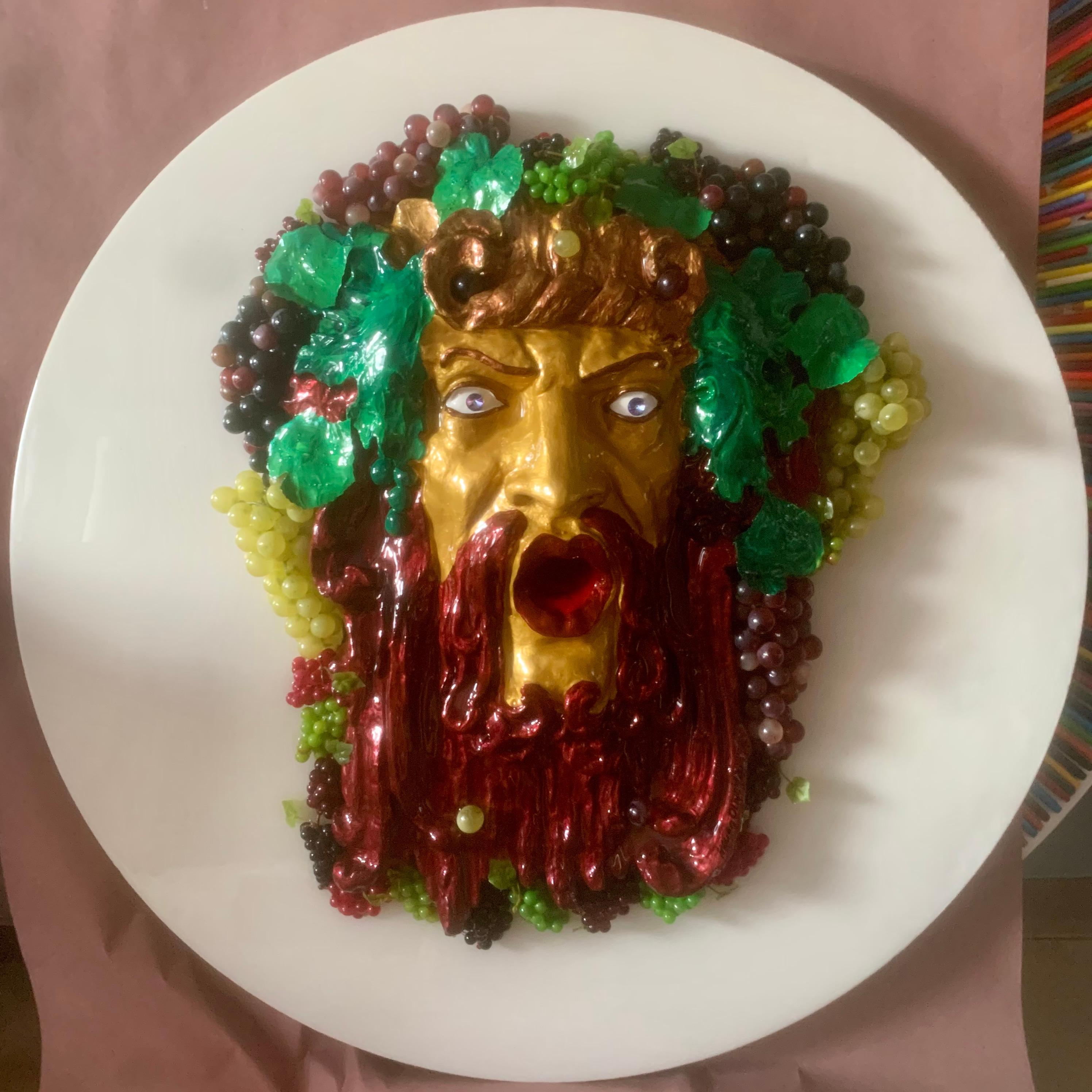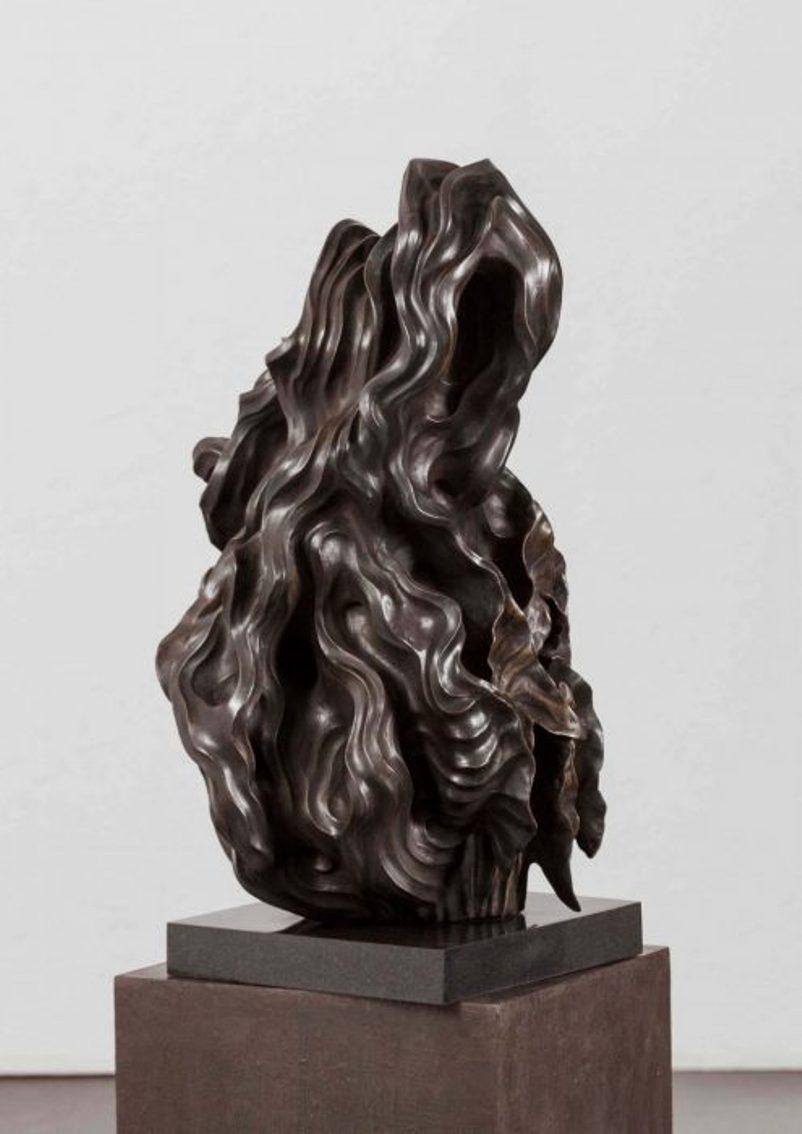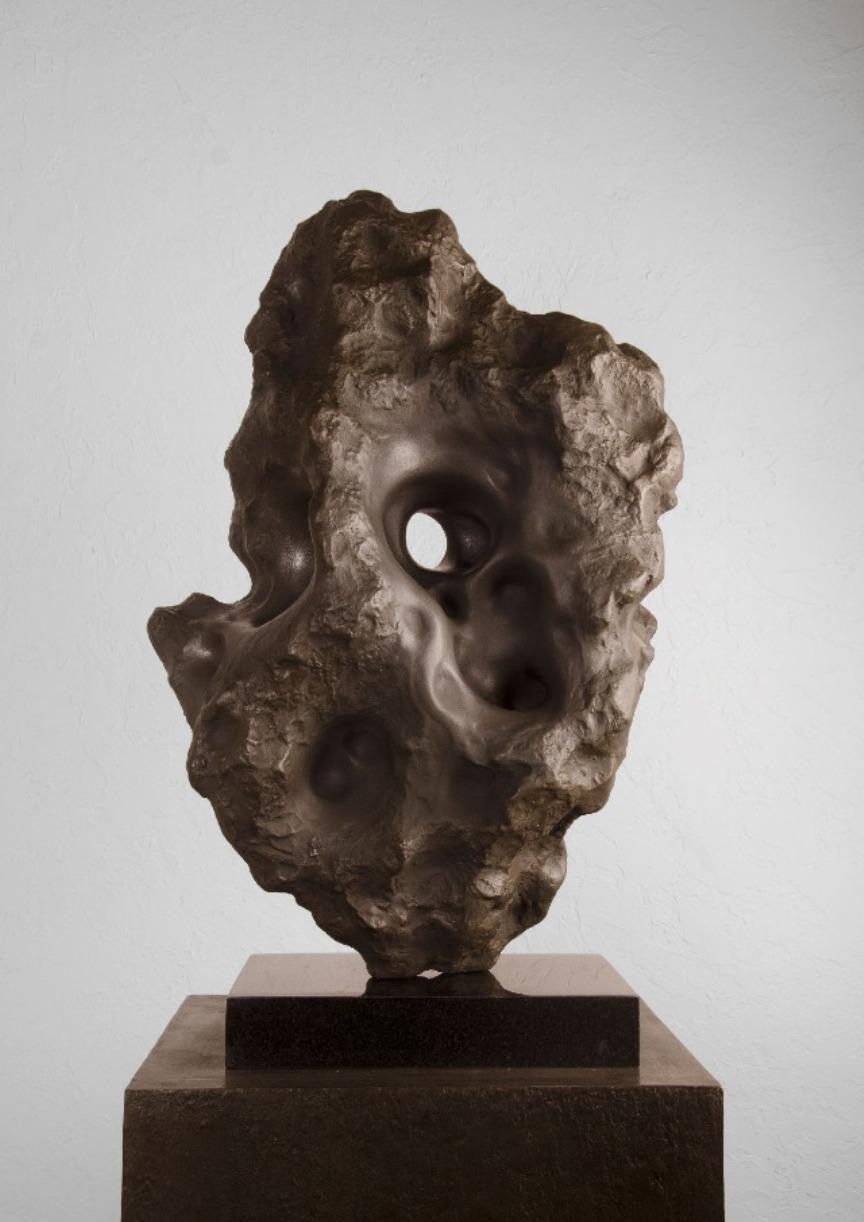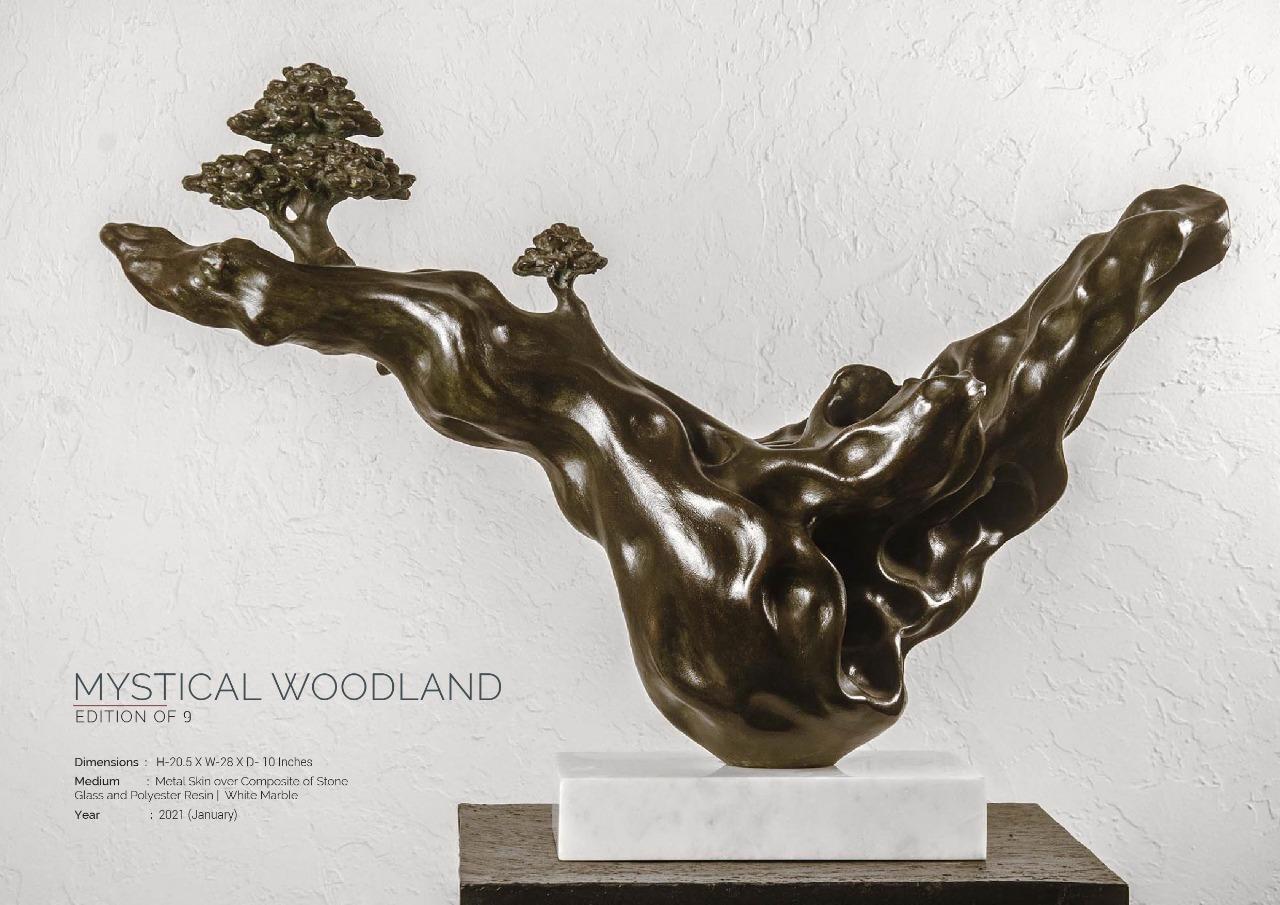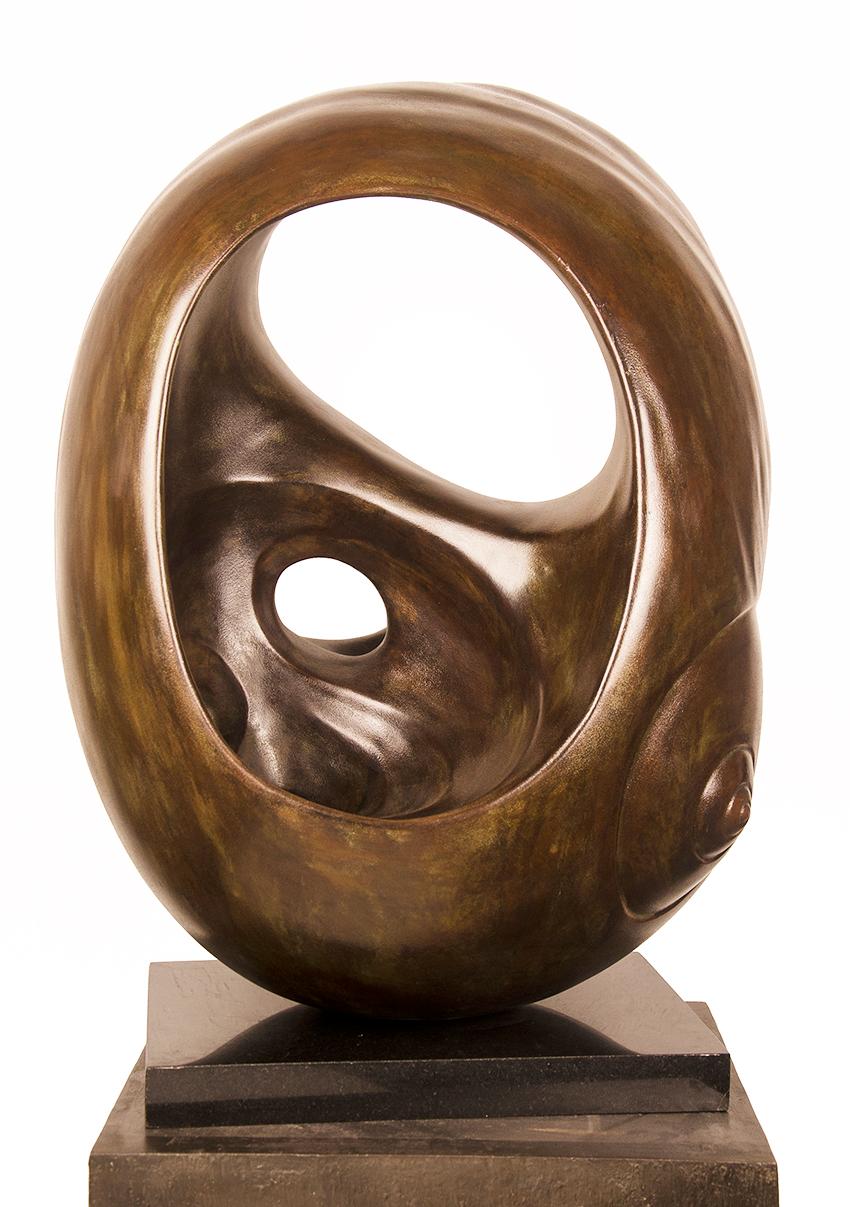Items Similar to Saturno
Want more images or videos?
Request additional images or videos from the seller
1 of 3
Lidó RicoSaturno2019
2019
About the Item
Saturno, 2019
Polyester resin and metal on glass 80 x 80 cm
The work of Lidó Rico focuses on the body, as an icon but also as a medium. Indeed, his own body constitutes the iconic material of his creations when he uses it as their mould. From this point of view, his work, on be corning a permanent reproduction of his corporeal shapes, could lead us to think that it is a personal, almost narcissistic exercise. However, the results show that nothing could be further from the truth.
in his works, Lidò Rico explores the loneless of mankind and its inner emptiness. The fear of defeat causes almost physical pain to his heroes, they disintegrate into parts, and they are absorbed by space.
Because Lidó Rico uses his body to express stares of pain and anguish that, what is more, do not refer to himself but to a generic individual: modern-day man. There is, therefore, complicity with the environment, meaning a commitment such as that acquired by artists in Franco’s time, although the very different circumstances of this period impose different discourses. It is not now about revealing the blatantly repressive conduct of power, but the state of disintegration that awaits the individual in this post-industrial society.
Lidó Rico uses his body to express stares of pain and anguish that, what is more, do not refer to himself but to a generic individual: modern-day man. There is, therefore, complicity with the environment, meaning a commitment such as that acquired by artists in Franco’s time, although the very different circumstances of this period impose different discourses. It is not now about revealing the blatantly repressive conduct of power, but the state of disintegration that awaits the individual in this post-industrial society.
- Creator:Lidó Rico (1968, Spanish)
- Creation Year:2019
- Dimensions:Height: 31.5 in (80 cm)Width: 31.5 in (80 cm)
- Medium:
- Period:
- Condition:
- Gallery Location:Berlin, DE
- Reference Number:1stDibs: LU2647213331112
About the Seller
No Reviews Yet
Vetted Seller
These experienced sellers undergo a comprehensive evaluation by our team of in-house experts.
1stDibs seller since 2023
- ShippingRetrieving quote...Ships From: Berlin, Germany
- Return PolicyThis item cannot be returned.
More From This SellerView All
- NaturaLocated in Berlin, DENatura, 2019 Polyester resin and metal on glass 80 x 80 cm The work of Lidó Rico focuses on the body, as an icon but also as a medium. Indeed, his own body constitutes the iconic ma...Category
2010s Figurative Sculptures
MaterialsResin, Plastic, Glass
- DoradoLocated in Berlin, DEDorado, 2019 Polyester resin and metal on glass 80 x 80 cm The work of Lidó Rico focuses on the body, as an icon but also as a medium. Indeed, his own body constitutes the iconic ma...Category
2010s Figurative Sculptures
MaterialsResin
- Campo BaseLocated in Berlin, DECampo Base 2015 Polyester resin 50 x 39 x 13 cm The work of Lidó Rico focuses on the body, as an icon but also as a medium. Indeed, his own body constitutes the iconic material of...Category
2010s Conceptual Nude Sculptures
MaterialsResin
- Autorretrato Elevado Al Máximo ExponenteLocated in Berlin, DESelf-Portrait Raised to the Highest Exponent Aluminum and plastic on glass 80x80 cm The work of Lidó Rico focuses on the body, as an icon but also as a medium. Indeed, his own body ...Category
2010s Abstract Sculptures
MaterialsMetal
- Dammagletscher UriLocated in Berlin, DEDammagletscher Uri 2020 Edition 1, AP. Pigment print on Canson photographic rag 310g, mounted on dibond in smoked oak wood frame with museum glass. Framed: 144 x 128 x 7 cm. Other ...Category
2010s Naturalistic Landscape Photography
MaterialsRag Paper, Pigment
- Kalakwa 1, Khomas RegionLocated in Berlin, DEKalakwa 1, Khomas Region, 2018 Edition of 2 Pigment print on Canson photographic rag 310g, mounted on dibond in smoked oak wood frame with museum glass. Framed: 68 x 93 x 3 cm Other editions in 3 sizes, 3-2-1 + AP To get a fresh look at natures beauty in a modern era, Zak van Biljon went beyond the visible spectrum to capture these vivid images. The technique, developed for military surveillance and crop surveys, captures near-infrared light: wavelengths of electromagnetic radiation that fall between what we see as red and the longer wavelengths used for thermal imaging. The pigment in plant leaves, chlorophyll, strongly absorbs visible light which they use as a source of energy in the process of photosynthesis. The cell structure of the leaves, on the other hand, strongly reflects near-infrared light. A strong absorption at these wavelengths would only result in overheating the plant and possibly damaging the tissues. The human eye is unable to perceive infrared light but it is exactly this reflected energy, which reacts with infrared-sensitive material to create electric pinks and vibrant reds. The idea of landscapes is not landscape by itself. Nothing exists by itself but only through perception. Our perception, however, is subject to both individual watching and classifying what we see. The classification is strongly subdued to the imagery with which we are confronted every day. The famous Windows computer desktop image “Bliss” and others of this kind have become a kind of nature of which we believe that is is “true” nature. Pictures of natures are not about falsifying nature itself but are reflecting our perception of nature. What kind of image do we have? On social media channels user are sharing zillions of filtered photos of nature...Category
2010s Naturalistic Landscape Photography
MaterialsRag Paper, Pigment
You May Also Like
- BACCHUS - GOD OF WINE AND FUNNN (One of a kind wall sculpture)By Mauro OliveiraLocated in LOS ANGELES, CA**ANNUAL SUPER SALE TIL MAY 15th ONLY** *This Price Won't Be Repeated Again This Year - Take Advantage Of It* This is a rare Terracotta large Bacchus sculpture...Category
21st Century and Contemporary Contemporary Figurative Sculptures
MaterialsTerracotta, Glass, Resin, Plastic, Acrylic, Wood Panel
- Leaves - The Mystical Link, Liquid Metal Coating, Composite of Stone GlassLocated in Kolkata, West BengalDivyendu Anand - Leaves - The Mystical Link - H 32 x W 20 x D 18 inches Edition 3/8 Liquid Metal Coating over Composite of Stone Glass and Polyester Res...Category
2010s Contemporary Figurative Sculptures
MaterialsStone, Granite, Marble, Metal
- Space Rock, Metal Skin, Composite of Stone Glass, Polyester Resin, Black MarbleLocated in Kolkata, West BengalDivyendu Anand - Space Rock - H 27 x W 18 x D 11 inches Edition 2/9 Metal Skin over Composite of Stone Glass and Polyester Resin, Black Marble, 2020 G...Category
2010s Contemporary Figurative Sculptures
MaterialsStone, Marble, Metal
- Yin-Yang, The State of Flux and Beyond, Liquid Metal Coating Over CompositeLocated in Kolkata, West BengalDivyendu Anand - Yin-Yang, The State of Flux and Beyond - H 26 x W 24 x D 13.5 inches Edition 7/8 Liquid Metal Coating Over Composite of Stone Glass and...Category
2010s Contemporary Figurative Sculptures
MaterialsStone, Granite, Metal
- Mystical Woodland, Metal Skin Over Composite Stone Glass, Polyester ResinLocated in Kolkata, West BengalDivyendu Anand - Mystical Woodland - H 20.5 x W 28 x D 10 inches Edition 3/9 Metal Skin Over Composite of Stone Glass and Polyester Resin, White Marble...Category
2010s Contemporary Figurative Sculptures
MaterialsMarble, Stone, Metal
- Within The Shell, Liquid Metal Coating Over Composite of Stone Glass, PolyesterLocated in Kolkata, West BengalDivyendu Anand - Within The Shell - H 30 x W 15 x D 14 inches Edition 2/8 Liquid Metal Coating Over Composite of Stone Glass and Polyester Resin, White ...Category
2010s Contemporary Figurative Sculptures
MaterialsStone, Granite, Metal
